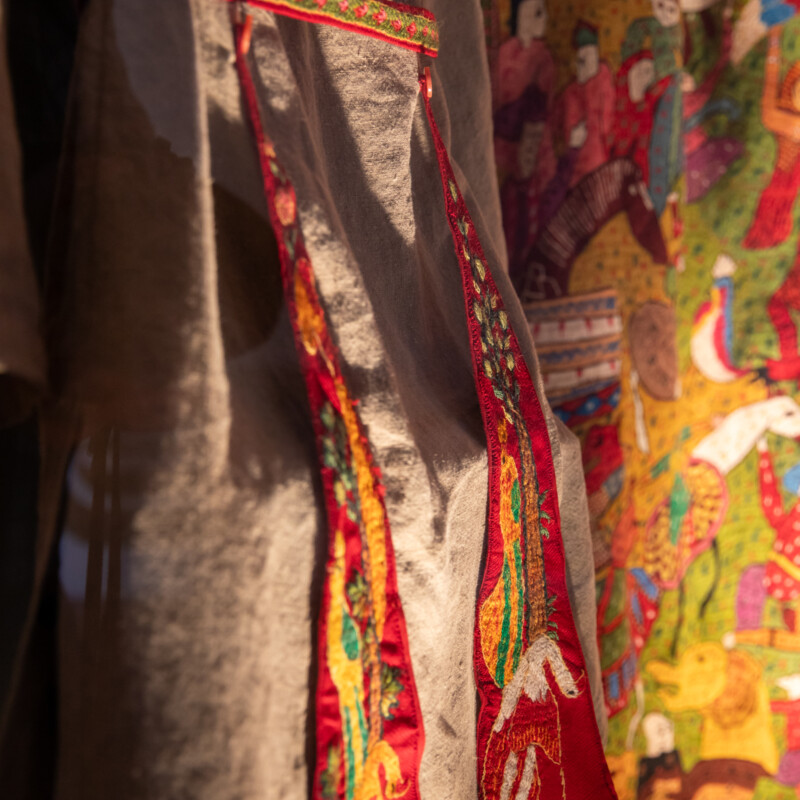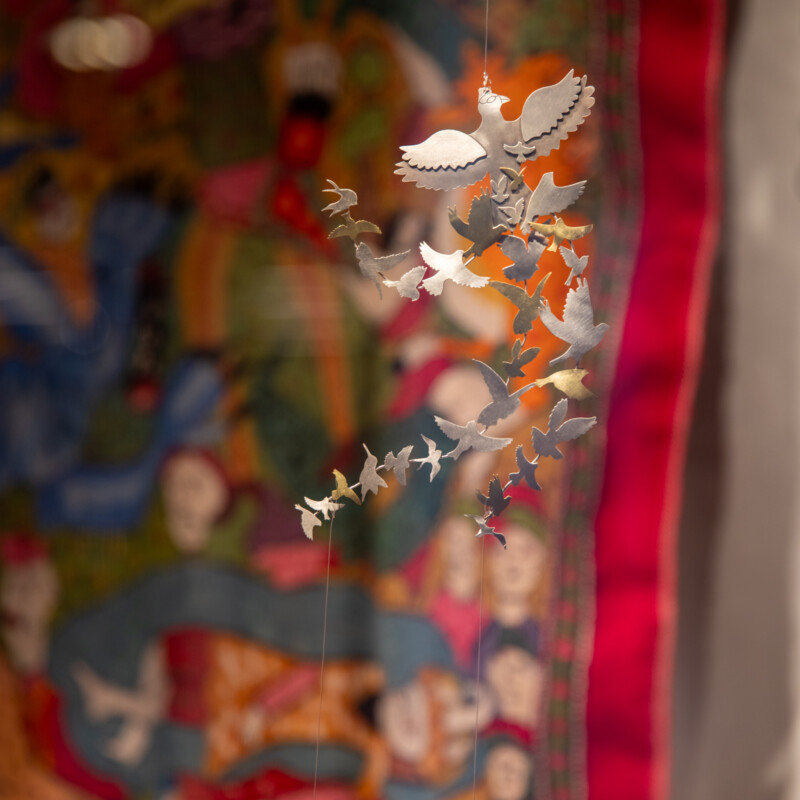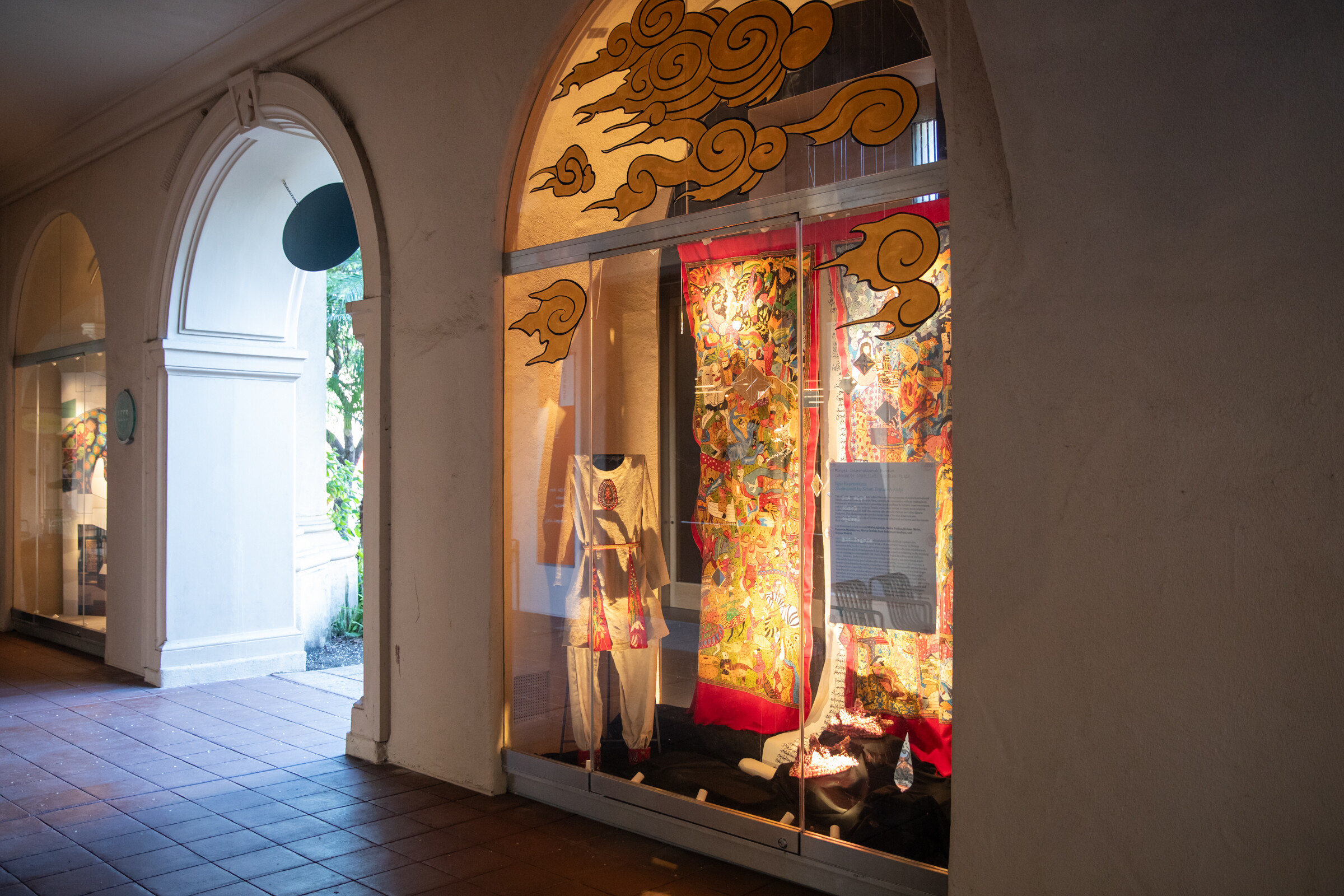In this conversation with Sadry Hedayat of Persian Place and artist Sasha Furlan, find out more about the development of the new installation in Mingei's Community Spotlight niche. This installation explores the work of seven international female artists who created pieces inspired by the Shahnameh, a 10th and 11th-century epic Persian poem. The showcased artists include Shirin Aghdaie, Sasha Furlan, Melissa Meier, Yasaman Mostajeran, Marty Ornish, Sara Soleimani Qashqai, and Soroor Sharifi.
Apr 12, 2024


Sadry Hedayat
How did you first develop the idea for the Community Spotlight installation?
After a really successful Persian New Year event that Persian Place had at Mingei in March 2023, the Museum invited us to make a showcase of Persian art in one of their enclosed niche spaces. We accepted it as an amazing opportunity to show the community what we do. The great thing about the niche is that it makes art even more approachable for everyone, because it doesn’t require visitors to enter the building to see it, but instead subtly invites them inside.
The concept for the exhibition installation evolved as I envisioned showcasing the diverse perspectives of women in the Shahnameh, or Book of Kings. In Persian culture, the number seven holds significant importance—it is a symbol of perfection and completion—so I invited seven female artists to create work for this exhibition.
What is the significance of the Shahnameh in Persian culture, and why did you choose to center the installation around these stories?
Shahnameh, written by the great Persian poet Ferdowsi in the 10th century, is a crucial text for preserving Persian language and culture. It serves as an epic that not only showcases the richness of the Persian language but also expresses historical and mythical narratives, contributing significantly to Persian identity and heritage. Shahnameh narrates tales of heroism, portraying the triumph of good over evil. The epic is filled with noble characters and moral lessons, reinforcing virtuous ideals within Persian culture. Last but not least, Shahnameh highlights the significance of women and their roles in various heroic narratives.
What do you hope visitors will take away from seeing this installation?
I hope visitors will gain a deeper understanding of Persian art. I aimed to highlight a wide range of Persian art forms, emphasizing the significance of female artists and showcasing our seminal book, Shahnameh, as well as referencing dramatic storytelling or Naqali, which tells stories through pictures such as the one depicted on the curtain displayed in the niche. Naqali is now included a part of UNESCO’s list of intangible cultural heritage in need of safeguarding. Persian Place works to keep these traditional art forms alive, as well as raise public awareness through the workshops we organize with the community.
Persian Place’s installation also illustrates the fascinating innovations that can arise when artists from diverse backgrounds collaborate. In the diverse, international community of California, exploring artworks inspired by different cultures can help to foster a sense of peace and mutual understanding among people.

Sasha Furlan
How did you get involved in Persian arts in San Diego?
Through Sadry I met a few Iranian artists in California and I was surprised with how much respect they talked about their traditions and Persian art. We started planning community classes and art projects, and through that process I began to explore these traditions. At first I was just copying fragments of patterns and symbolic elements from miniatures and stone carvings, but soon I discovered how meditative and calming the process is, and started to read about meanings of all the different colors and elements.
We had some very successful workshops, which were instructed by different artists from diverse backgrounds. I taught classes on Persian tiles, collages, miniature paintings, but there was also piñata, calligraphy, and crown-making workshops. We organized different Persian events at great museums such as the Mingei, the Bowers Museum in Orange County, and the Oceanside Museum of Art. I can't wait to engage in even more interesting projects with Persian Place in 2024. We have so many ideas and plans, and people’s reactions have been so encouraging, which motivates us to do even more projects.
What kinds of Persian art attract you, and what kinds of art are you pursuing now?
In my exploration of Persian miniatures and tiles, I was attracted to the contemplative and transcendental qualities of this tradition. What’s interesting about Persian miniatures is that they are free from any specific time or space—there’s no atmosphere and no perspectival depth. Another interesting fact that I recently read is that the hair from Persian cats was used to make brushes for Persian miniatures, so the most important Persian Place team member, Sadry's cat Pirouz, should watch out!
The emphasis in miniatures on free hand drawing and stylizations of natural elements helped me to move past imitating reality as an artist, and also to dig into traditions from my own culture. Right now I’m exploring patterns in nature and traditional comfort food. Persian art, traditional American lettering, and sign painting have helped me to better realize my motivations and to move forward without being tied to realistic trompe-l'œils.
